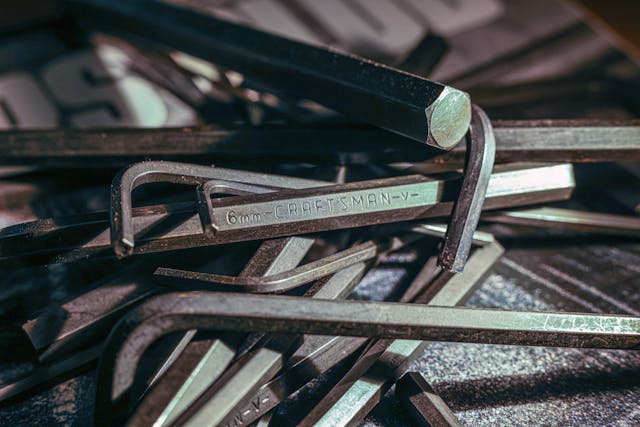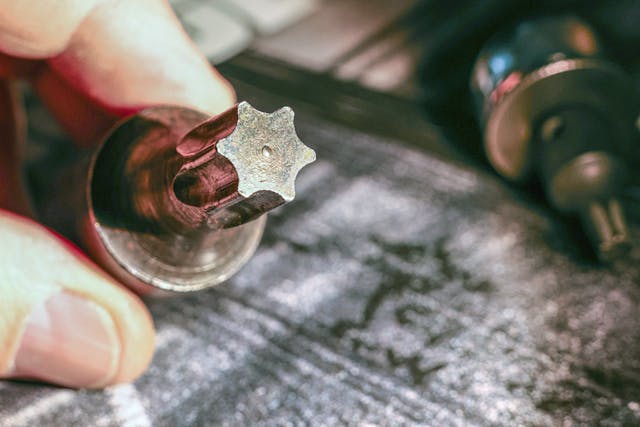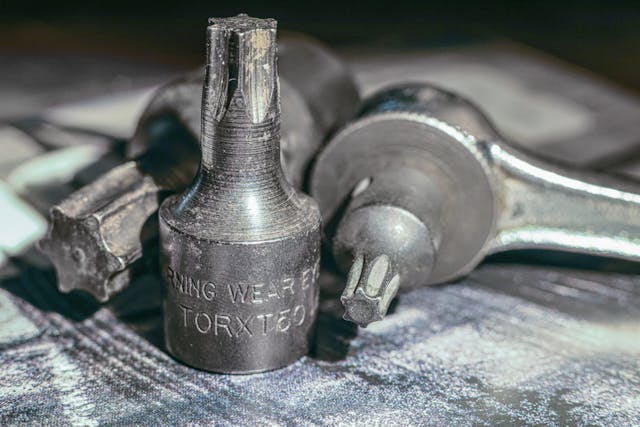In praise of the Torx fastener
If any of you out there have owned a domestic vehicle from the ’80s or ’90s, perhaps you also know the frustration of having to keep both SAE and metric tools in stock. Vintage Detroit iron is naturally going to feature SAE fasteners, and both European and Asian imports will naturally be assembled with metric hardware, but for far too long the Big Three made a slow transition to metric, leaving vehicles with both kinds of fasteners.
Often a vehicle’s chassis and body would be SAE while its drivetrain would use metric, making it possible for a single job to require both types of tools. My Jeep Cherokee, built by the Chrysler Corporation, uses an engine originally designed by AMC and a transmission made by Aisin AW, a subsidiary of Toyota. One set of sockets won’t cut it.
Once I’m in the habit of wrenching, I can eyeball a fastener and know the size pretty accurately, although for me that’s a skill that wears off rather quickly between wrenching sessions. It wouldn’t be so bad with just one type of socket or wrench to choose from, but it can test your patience when, after eyeballing a distant bolt head and snaking a few extensions, you realize you’re off by the tiniest of margins.

Hex bolts and nuts have that problem, Allen bolts, which are in internal hex, have that problem. There is a fastener that doesn’t have that problem. Torx. Is that an SAE T55 Torx or is that a metric T55 Torx? Nope, it’s just a T55 Torx. The fasteners are used for both metric and SAE threads. The graduations between Torx sizes make them pretty easy to eyeball as well. Torx fasteners and drivers have been around since 1967, when the six-pointed star pattern was invented by Bernard Reiland at Camcar and patented in 1971.
Torx isn’t perfect, as they are a rather tight tolerance. It can be difficult to insert the driver if they collect gunk in an engine bay, for example. I’d take that over a Phillips fastener that would rather cam its driver out of the fastener than apply enough torque to break it loose.

Unfortunately, Pandora’s box of different fastener types has been opened and manufacturers seeking lighter, stronger fasteners have created a myriad of options, requiring the DIY wrench to expand their toolbox with every new vehicle that enters their stable, Torx drivers included. I do admit that I don’t hate adding new tools to the toolbox, I just wish we’d come to a consensus on fastener shapes and sizes. There is one consolation, however. Every one of my sockets still has at least one half that’s SAE.

***
Check out the Hagerty Media homepage so you don’t miss a single story, or better yet, bookmark it. To get our best stories delivered right to your inbox, subscribe to our newsletters.



Try buying a t27 m6 bolt with a captive washer used on many GM cars
After 55 years in the fastener industry, I am tempted to write a book in response to so many comments here. But, staying on topic, Torx™ drive was invented by Camcar Div. of I.T.W. (Illinois Tool Works). It’s original use was in automotive assembling. Two major advantages of Torx™ drive was a tapered recess, which held the screw on the driver and an increased bearing surface between the recess and the tool. Thus a higher resistance to ‘camout’, where the tool slips from the recess in higher torque settings. It was the first drive which was obviously superior to internal hex. BTW, “Allen” is a trade name for the socket head cap screw, socket set screw, button head screw, etc. Interestingly enough Allen did not invent the internal hex drive. That was SPS Technologies (Standard Pressed Steel – 1936) of Jenkinstown, Pa. After 17 years the patent ran out and other people now make Torx™ drivers, but the name is still proprietary. Don’t even get me started on Type 1 (“Phillips”) or Type 1A (“Posidrive”) or Type II recesses. LOL
Really, until you’ve has to deal with British nuts and bolts, you have had it easy.
I’ll just add another pile of tools to my cabinet. It’ll go along with my Witworth and assorted other ‘better ideas.’
Allen head or button head screws should be outlawed simply because they are a PAIN IN THE A– to use. I do a lot of street rod stuff & why the suppliers think that everybody wants allen style bolts & screws is beyond me. They may think they’re cool looking, but they’er a pain to install, especially in tight spaces, & if you have to take it apart again, you have to go through that hell again!
I have found there are different grades/ quality of tools. Buy a reputable brand, and they work well. Get a elcheapo brand, and they ain’t worth the time to bring them home from the store, or of late, off the front porch. You get what you pay for.
And then there are Torx Plus. Just when you think it’s safe to go back into the toolbox!
I have a 50 year old British car which, when based in Germany, was referred to by the mechanics as “That English car!” because of its myriad of different fasteners. It was a source of considerable frustration that no tools seemed to fit, ever, and being so well built (for which read: EVERYTHING has more moving parts/fasteners/connections than you would imagine) every task resulted in every tool of every type (metric, SAE, Whitworth, others) in the shop being needed. I am now accumulating every type of tool imaginable and this article gives me solace that others are confronted with similar challenges. Thanks for article – I learnt something.
After 35yrs of assembly experience I’ve pretty much seen it all. The hardware the manufacturer buys isn’t always from the same vendor so quality is different. The quality of the tools are different . Every time a fastener is screwed in or out material is lost from the threads,the screw head and the tool, especially if an impact is used. On a high production line where impacts are used we would sweep the floor after every shift and the debris in the dustpan would stick to a magnet. Buy quality tools and hardware. Most problems are due to rushing things. I can’t stress enough, heat,lubrication and patience is the key. A 50yr rusty bolt isn’t coming out after spraying it with pb blaster and immediately taking a wrench to it. Soak it every day beforehand. Every garage should have a big sign inside that says WHEN IN DOUBT LUBRICATE!
“Torx Plus” throws another curve at us.
Slightly heavier than “Torx”
I hate Phillips head fasteners. The problem is there are several different bits for different screw heads.
Some are pointed on the end or somewhat flat on the end. They are all numbered but who can tell?
If you take time and try to fit different heads in the screw to make sure of a tight fit before applying leverage you have a chance of removing it. Then throw it away and replace it with a Robertson head or Torx.
An old man at a junkyard once showed me a trick with phillips head screws. He would put the screwdriver in the screw and hit it with a hammer to seat it further and to break the rust bond a little. Helps a lot with older cars.
what about double squares
I had to get a set for my ’94 C4 Vette. I don’t mind them but the small ones can be a fiddle.